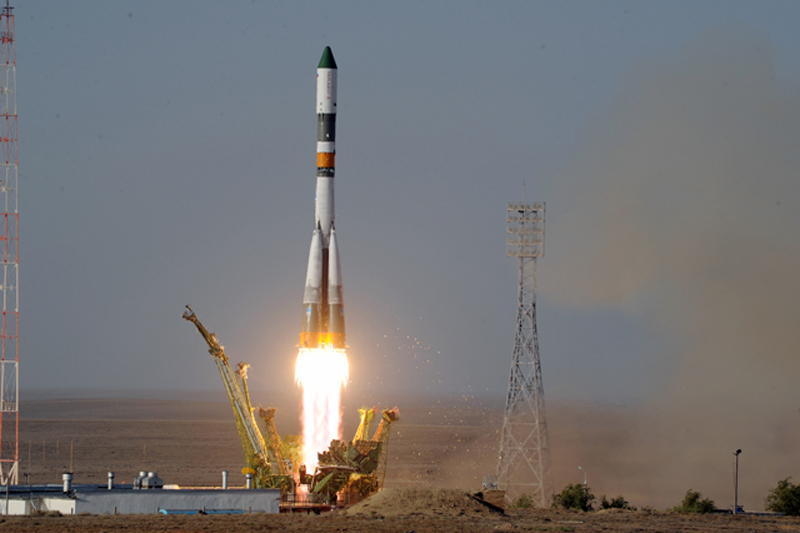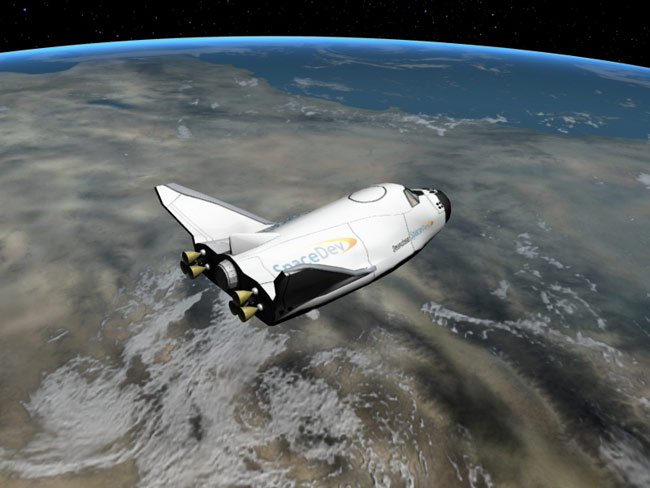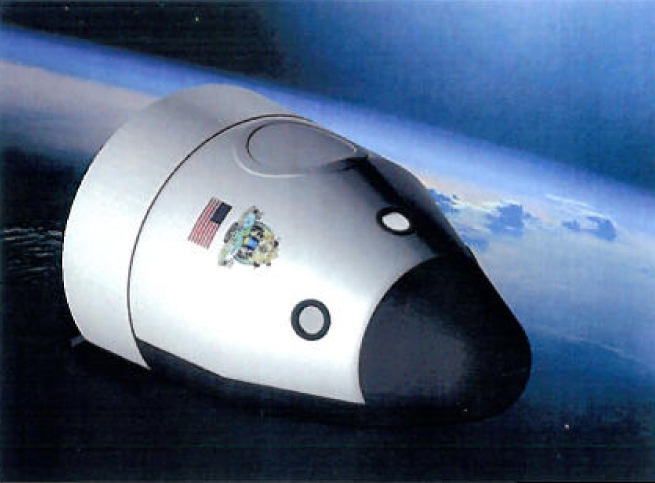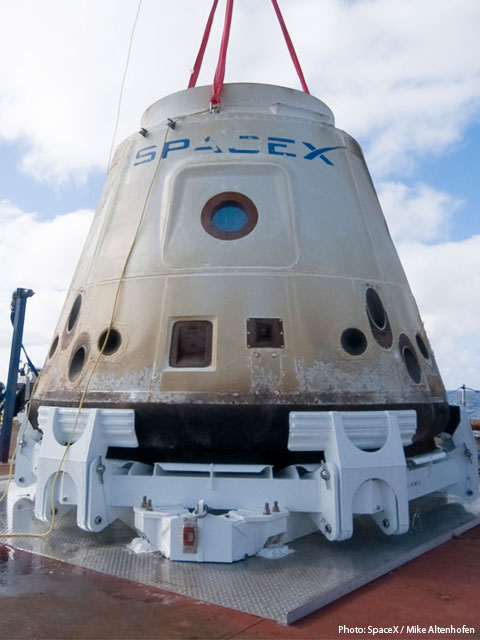
Last week's crash of an unmanned Russian cargo spacecraft underscores the importance of getting private American vehicles up and flying soon, experts say.
Russia's Progress 44 supply ship went down over Siberia on Aug. 24, done in by a problem with its Soyuz rocket. That rocket is similar to the one Russia uses to launch astronauts to the International Space Station, so crewed flights from the country are off the table until the issue is fixed.
That means humanity could be stuck on terra firma for a while, because right now Soyuz is the only crew-carrying game in town. This unfortunate turn of events highlights a valuable lesson, according to analysts and observers. [Photos: Russia's Lost Cargo Ship Progress 44]
"It dramatizes the situation we're in," said space policy expert John Logsdon, professor emeritus at George Washington University. "Depending on a single form of access is an invitation to this kind of problem."
Engineers investigating the Progress 44 accident have now traced the source of the failure to a malfunction in the gas generator in the Soyuz’s third-stage engine, Russian officials announced earlier this week.
Waiting in the wings
When NASA retired its space shuttle fleet in July, the United States became completely dependent on Russia to ferry American astronauts to and from the space station. This reliance, however, was always envisioned as a temporary state of affairs.
Get the Space.com Newsletter
Breaking space news, the latest updates on rocket launches, skywatching events and more!
NASA wants private American companies to take over the Soyuz' orbital taxi role, and soon. To that end, the agency has given money to a handful of aerospace firms — including SpaceX, Boeing, Sierra Nevada and Blue Origin — in two separate rounds of funding under its Commercial Crew Development program.

The aim is to help support and advance an entire industry, not pick a winner. [10 Private Spaceships Headed for Reality]
"The commercial crew program was planned from the beginning to result in multiple systems to carry crew to the International Space Station," said John Gedmark, executive director of the Commercial Spaceflight Federation.
Having several different firms vying for NASA contracts should drive costs down, improve service quality and protect against "outages" like the one perhaps looming after the Progress crash, Gedmark said.
"That's the goal — to have an iPhone, a Blackberry and an Android phone all competing in the marketplace, so you're not just relying on one system," Gedmark told SPACE.com.
Others in the industry voiced similar sentiments.
"Soyuz is the only way we can get astronauts to the station," Kirstin Brost Grantham, communications direction for SpaceX, told SPACE.com. "The United States needs to have alternatives, and we need to have those alternatives as soon as possible."
Ready in four years — or less?
Several private spaceflight firms have said they hope to start operational, crew-carrying flights to the orbiting lab by 2015. Some politicians, however, are uncomfortable with being dependent on the Russians for four more years.

"The most responsible course of action for the United States is to dramatically accelerate the commercial crew systems already under development," Rep. Dana Rohrabacher (R-Calif.), a senior member of the House Committee on Science, Space and Technology, said in an Aug. 24 statement after the Progress 44 went down.
Rohrabacher called on NASA adminstrator Charlie Bolden to funnel more money into the commercial crew program. (Rohrabacher did not advocate giving NASA more money; rather, he suggested Bolden transfer cash from other agency programs, such as its effort to develop a heavy-lift rocket.)
A big cash infusion might indeed speed up the firms' timeline, according to Gedmark.
"There's no question that the more funding they receive, the faster they can get up and flying," he said.
Cargo craft, too
Russia doesn't have a monopoly on unmanned cargo missions to the space station; the European Space Agency and Japan both launch robotic resupply vessels of their own. But NASA wants American companies to get into this game, too.
The space agency has signed deals with SpaceX and the Virginia-based Orbital Sciences Corp. to make supply runs to the orbiting lab. SpaceX has already flown one orbital demonstration mission with its Dragon capsule and Falcon 9 rocket, and the company is getting set to launch its second and final test flight in late November.

On that upcoming mission, Dragon will dock with the station and perhaps even offload some supplies. If all goes according to plan, it would be a big moment for private spaceflight, experts say.
"If that goes even moderately well, I think it's going to put a significant number of fears to rest on the U.S. side, and among U.S. space station partners," Brian Weeden, a technical adviser for the Secure World Foundation, told SPACE.com. "I think that would be a huge step forward."
SpaceX has said it could likely start making cargo runs to the station three to four months after Dragon's second demo mission. For its part, Orbital Sciences plans to launch the first test flight of its Cygnus spacecraft and Taurus 2 rocket in February. That mission would also dock with the orbiting lab.
Russia still a key partner
The Progress 44 crash was the latest in a string of Russian rocket failures over the past 10 months. However, it was the first serious issue with a Progress flight after 43 straight successful missions. And Soyuz rockets have performed quite well over the years.
That impressive track record is worth remembering. Russia, after all, is a key spaceflight partner of the United States — and will be for some time to come.
"One hopes this was a random failure, not something systematic, and that Soyuz can be flying again soon," Logsdon told SPACE.com. "That's the best possible outcome — get back to flying Soyuz quickly, while we develop U.S. alternatives."
You can follow SPACE.com senior writer Mike Wall on Twitter: @michaeldwall. Follow SPACE.com for the latest in space science and exploration news on Twitter @Spacedotcom and on Facebook.
Join our Space Forums to keep talking space on the latest missions, night sky and more! And if you have a news tip, correction or comment, let us know at: community@space.com.

Michael Wall is a Senior Space Writer with Space.com and joined the team in 2010. He primarily covers exoplanets, spaceflight and military space, but has been known to dabble in the space art beat. His book about the search for alien life, "Out There," was published on Nov. 13, 2018. Before becoming a science writer, Michael worked as a herpetologist and wildlife biologist. He has a Ph.D. in evolutionary biology from the University of Sydney, Australia, a bachelor's degree from the University of Arizona, and a graduate certificate in science writing from the University of California, Santa Cruz. To find out what his latest project is, you can follow Michael on Twitter.









